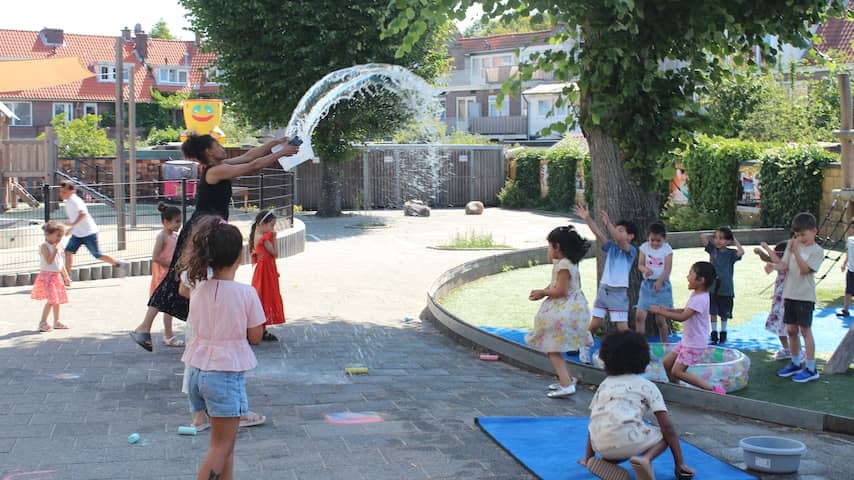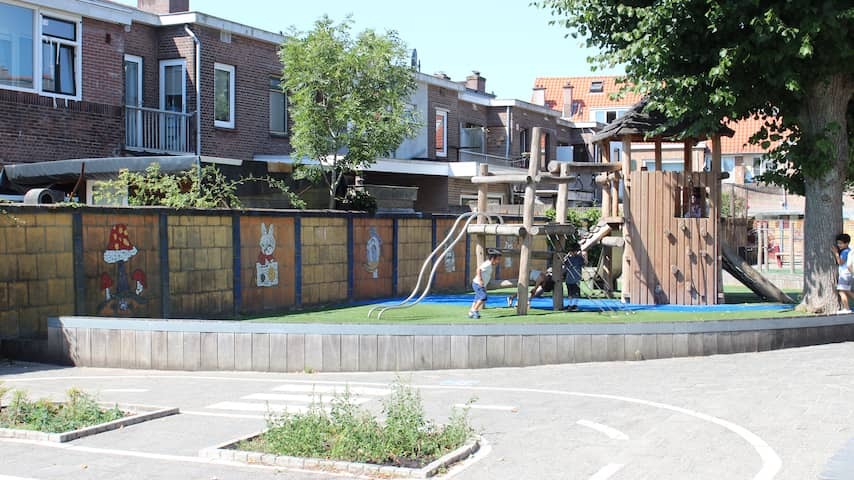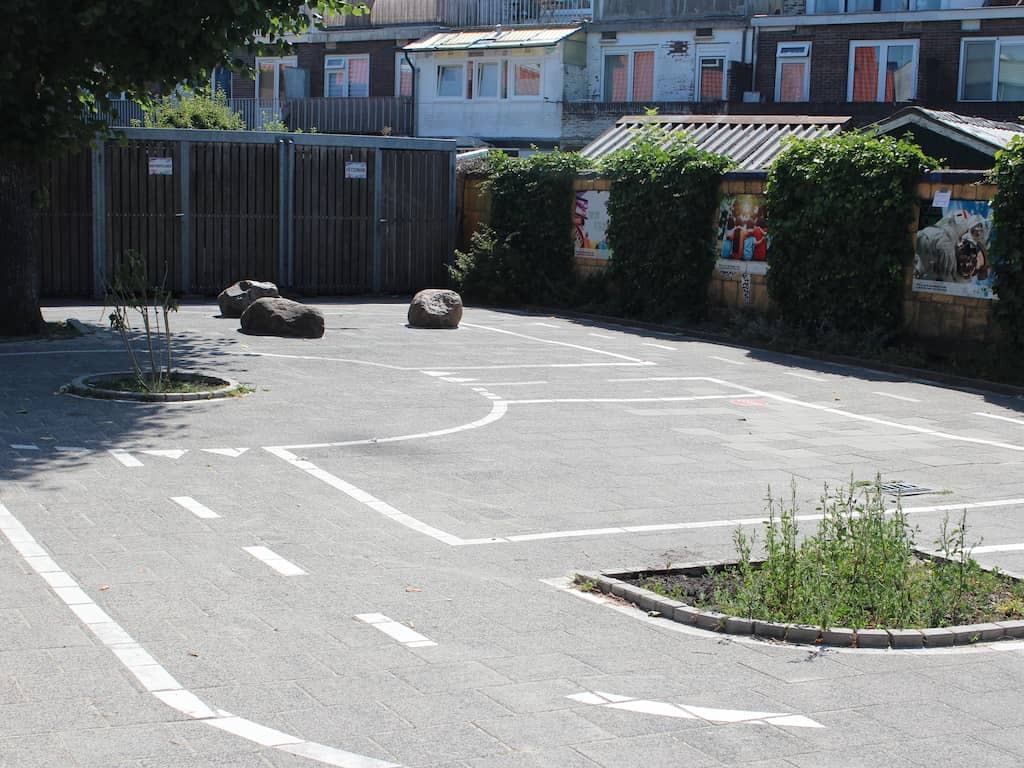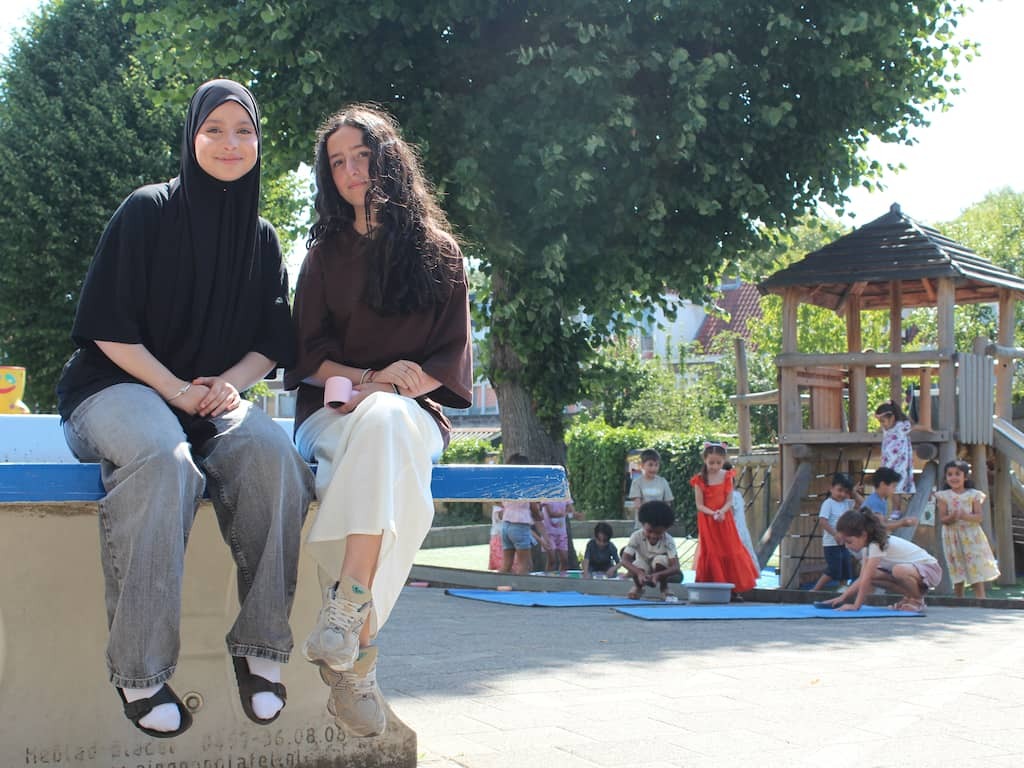
It is tropical warm in the Netherlands, and schools are also struggling with this. Heat problems will further increase in the coming years due to climate change. A primary school in a stony neighborhood in The Hague is trying to make the best of it, but the problems are persistent.
On Monday afternoon around 4:00 PM, primary school teacher Wim Keller of Public Primary School De Spoorzoeker sends the principal a message. He wonders, based on questions from parents, whether a tropical schedule should be introduced on Tuesday.
Half an hour later, the decision is made: classes will end at 12:00 PM on Tuesday. The management had already seen the KNMI’s forecasts days ago but did not want to change everything drastically.
When NU.nl visits on Tuesday morning, the preschoolers are playing by an inflatable pool on a field of artificial grass, girls from group eight are hanging out on a stone wall in the shade, and a handful of boys are playing soccer in the burning sun. There is little shelter on the sizzling schoolyard.
One of the soccer players, Aadesh from group 8, is hanging overheated over a table with a water bottle in his hand a little later. “I’m so hot,” he groans. Keller suggests he stand next to the fan in the classroom further on. The windows and curtains are closed there.
The thermostat inside already indicates 28 degrees at 10:30 AM. Outside on the schoolyard and in the streets around the primary school, the temperature will rise to almost 40 degrees today.

Health problems affect school performance
Heat is a growing problem in the Netherlands. Our summers are getting warmer due to climate change: the number of hot days and nights is increasing. A day with a temperature above 35 degrees used to be almost unthinkable but now occurs more and more often.
Children, like the elderly, are extra vulnerable during a heat wave. UN children’s rights organization UNICEF conducted research into the climate effects on children. A recent report describes how health effects impact school performance.
“Almost all children in the Netherlands experience heat stress when playing outside in tropical temperatures, especially in new housing estates, urban areas, and rental properties,” says UNICEF researcher Johan Kruip. “At temperatures like today, children cannot escape the heat during the day and at night.”
According to Kruip, this can lead to respiratory problems, headache, fatigue, dehydration, stress, anxiety, and concentration problems. “Especially children who are already more vulnerable are affected.”

No national rules for maximum temperatures
On days like these, schools do take (emergency) measures, such as the much-discussed tropical schedules or longer breaks. But schools are not always equipped for such circumstances, experts say. Moreover, there are no national rules for maximum temperatures at school in, for example, the Working Conditions Act.
Remarkable, according to teacher Keller. “Because it is getting warmer and warmer, there should actually be a protocol so that schools, parents, and children know where they stand when the KNMI gives such a warning.”
With today’s tropical schedule, “teacher Wim” mainly lets his students do their thing. Staying inside and doing work, hanging out, or playing; today, they can decide for themselves. The rehearsals for the final musical – the performance is in two weeks – have been canceled.
Twelve-year-olds Yasmina and Soumaya from group eight talk about how they feel on hot days. “I have less concentration and everything is sticky,” says Yasmina. “It’s okay near a fan, but we only have two.”
It is also hot at home. “I don’t have a window in my room,” says Soumaya. She sometimes has trouble falling asleep. She does have a pink hand fan, but it’s just empty. After school, they want to go swimming somewhere.
What is the heat island effect?
Cities are often several degrees warmer than the countryside. This has everything to do with the fact that stones in the city retain heat, there is less nature, and more reflection from windows, says climate researcher Lisette Klok of Climate Adaptation Services (CAS). Scientists call this the heat island effect.
In The Hague’s Moerwijk, a stony neighborhood where De Spoorzoeker is located, it will probably be a lot warmer than in Wassenaar. The effect is greatest in poorer neighborhoods, because children there have the least access to green spaces or cooling resources, according to UNICEF. They are also often dependent on housing corporations to take measures, Klok knows.
School buildings not yet climate-resistant
According to Carolina Pereira Marghidan, heat expert at the Red Cross and researcher at the KNMI, there are several possibilities for schools to make it more bearable on hot days. Tropical schedules, more breaks, no sports activities, and distributing water are good solutions for now.
“But ultimately, it’s about structural adjustments: how do you design a building? Is there enough ventilation inside and enough shade on the schoolyard?” According to Marghidan, steps are already being taken towards more climate-resistant construction. “But not enough,” she says. “We mainly see that buildings are designed against the cold, but not resistant to heat.”
It is also important that parents and schools properly inform children about what heat is and what it can do to you. And that they take measures in good time. “Deciding a day in advance is a lot of hassle; you can more easily take measures the week before to keep everyone safe.”
In Keller’s class, they are mainly concerned about the final musical, which will go ahead at all costs. “We still have eleven days to go, and a lot of rehearsing needs to be done,” says Yasmina. In total, they will play four times in a theater without air conditioning. They are crossing their fingers for some cooling in the coming weeks. “I don’t want sweat stains on my costume.”
